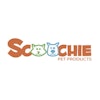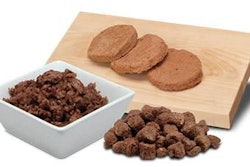
The idea that the long-term viability of the pet food and pet care markets rests in the hands of today’s Millennial consumers may give some industry watchers and company executives pause. Though stereotypes of younger people being narcissistic slackers seem passé now, perceptions still exist that Millennials are self-absorbed, permanently bonded to their mobile devices and not brand loyal.
Actually, the parts about mobile devices and brand loyalty are true—but so is this: in 2014, US households headed by Millennials spent US$10.6 billion on their pets (over 15% of the roughly US$60 billion spent on pets that year), according to Packaged Facts. Further, US pet owners in the 18- to 34-year-old age group now number 43 million, about one in three of all US pet owners, and the group accounted for 43% of the increase in US pet ownership from 2007 to 2015.
These pet owners belong to an optimistic demographic, too; 75% of US Millennials believe the economy is strengthening, compared to 59% of US consumers overall, according to Mintel. And 68% of Millennials say they plan to increase their financial investments by the end of 2016 versus only 42% of consumers overall.
In terms of pet food and pet care spending, this is all great news because, according to Packaged Facts: “The accelerating aging of the American population threatens to shift the consumer landscape for the pet industry because pet ownership traditionally has declined precipitously after age 60. In addition, the population of 40- to 54-year-olds—an age segment with a relatively high propensity to own and spend money on pets—is expected to decline.
That may all be true, but an in-depth analysis of US pet spending by age group indicates these declines may not be as significant as feared. John Gibbons, the “Pet Business Professor,” analyzed data from the US Bureau of Labor Statistics’ 2014 Consumer Price Index (CPI) and Consumer Expenditure Survey (CES) and determined that people aged 45-54 spend nearly 120% more than the average US household on all pet products (not just pet food), with spending falling only to 113% above average for ages 55-64 and to 108% for ages 65-74, when income falls to 78% of the average household. Even after age 75, when income decreases to 52% of the average (and physical abilities tend to decline), pet product spending still remains slightly higher than income, at 53%.
While pet spending for people under the age of 25 registers at only 33.6% (compared to incomes for that group at 45% of the US average), by the time pet owners move into the 25- to 34-year-old group—part of Packaged Facts’ Millennial cohort—their pet product spending leaps to 104% above average versus only 91% of average US income.
No matter how you slice and dice the data, and no matter how much pet owners in older demographics continue to spend, the fact remains that they (and their pets) can’t live forever. That’s why we can take some comfort in entrusting the future of the US pet food and pet care markets to Millennials.
“Millennials will account for an ever growing share of pet expenditures in the years ahead because they represent a large population cohort that will be entering a stage of life when expenditures on pet products and services jump dramatically,” Packaged Facts said. The CPI and CES pet spending data show that to indeed be the case.


















